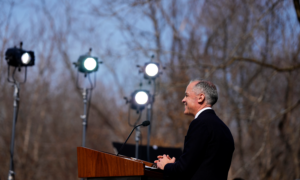In 2021, the median 401(k) balance was $89,716 for someone aged 55 to 64. Unlike with Canadians, American employees can cash out at any time whether they’re working or leaving a job. (All figures in this article are in U.S. currency.) It’s the only developed economy that does this. As the article points out, “other countries require many months of unemployment and evidence of clear hardship before allowing someone to tap defined contribution retirement savings.”
In addition to the lost tax-deferred growth potential, they also pay income tax on withdrawals and an extra 10% penalty if they take it out before age 59.5. The 162,360 employees left firms between 2014 and 2016 (long before COVID-19). One shocking finding was that 41.4% cashed out their 401(k)s when they left their jobs. And of that group, a whopping 85% drained their entire balance.
In a telephone interview, Wang tells me that, in the U.S., most employees with less than $1,000 in a 401(k) are automatically issued a cheque with tax and penalties withheld, with no other options offered by employers. Those with balances between $1,000 and $5,000 have two other options apart from cashing out: rolling over assets into qualified individual retirement accounts (IRAs), which resemble Canada’s RRSPs; or to transfer to a new employer’s 401(k) plan. Finally, those with more than $5,000 in the plan have those two options, plus the option of keeping their money in the current plan.
Employer matches viewed as “free money”
All these options are presented through form letters sent out by employers. The HBR article points out that, when exiting employees are “nudged to consider the option to cash out, it becomes quite appealing to spend what had previously been seen as an untouchable source of retirement security. No wonder so many more cash out when changing jobs than when working.”
Researchers also found an interesting phenomenon whereby the more a generous employer “matches” employee contributions, the more the departing employee is tempted to cash out and spend what it regards as “house money” or “free money.” Thus, the authors write: “Right now, cashing out is the path of least resistance. People choose what is easy, not what is wise.”
Meanwhile, here in Canada, an H&R Block Canada survey released on April 3, 2023, found nearly half of Canadians are unprepared for retirement—at least the traditional “full-stop” retirement at age 65. Fully half have so little savings that they are planning to work at least part-time in retirement. Not surprisingly, only 46% “feel good” about their retirement strategy. It cites Statistics Canada data that found the average retirement age in 2022 was 64.5.
However—and this would interest our job-changers south of the border—more than a third (36%) of those between ages 18 and 54 believe they won’t ever retire. That’s almost the same percentage as the 37% who have employer-sponsored registered pension plans. And, 56% have an RRSP and 54% a tax-free savings account (TFSA), and another 6% plan to set up one of those at some time. Also, 19% plan to rely on CPP/OAS/GIS (Canada Pension Plan, Old Age Security and Guaranteed Income Supplement). When asked about America’s Social Security, Wang said their study did not address this.
Jonathan Chevreau is the Investing Editor at Large for MoneySense. He is also founder of the Financial Independence Hub, author of Findependence Day and co-author of Victory Lap Retirement. He can be reached at [email protected].











